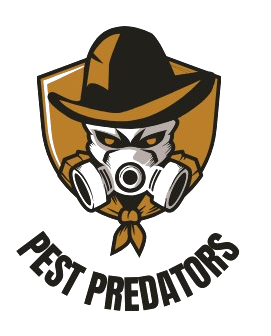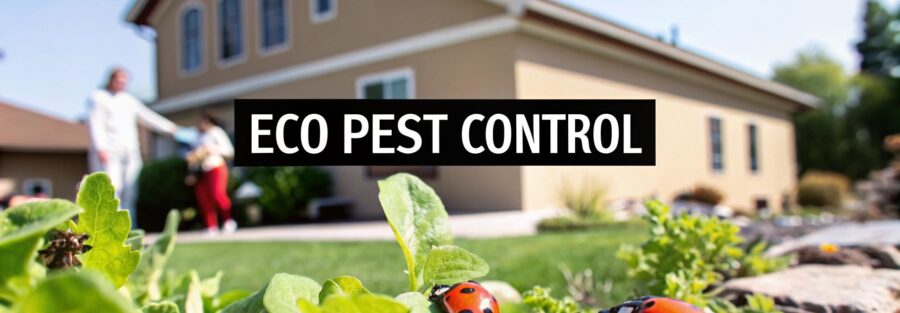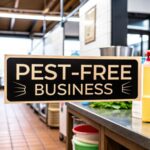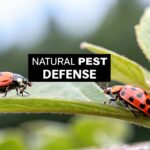Eco-friendly pest control isn’t about waving a magic wand; it’s a smart, sustainable way to manage pests by working with nature instead of against it. It means prioritising the health of your family, pets, and the local environment over blasting everything with harsh, broad-spectrum chemicals.
What Is Eco-Friendly Pest Control, Anyway?
Let's be honest, the term 'eco-friendly' can sound a bit wishy-washy, but the idea behind it is incredibly practical. Think of your home and garden not as a battlefield, but as a small ecosystem that's just a little out of balance. The goal isn’t to wipe out every last insect, but to manage pest populations so they don't cause harm, keeping your home safe and healthy.
This approach is a world away from the old 'spray first, ask questions later' model. Instead, it relies on a clever, evidence-based strategy that puts you back in control. It's about figuring out why pests are showing up in the first place and fixing the root cause, rather than just endlessly treating the symptoms.
The Foundation: Integrated Pest Management
The professional gold standard for eco-friendly pest control is a strategy called Integrated Pest Management (IPM). It's a multi-step process that always starts with the lowest-risk methods, making it both effective and responsible. The core principles are simple common sense:
- Prevention First: Proactively making your home less inviting to pests. This means sealing up cracks, managing your bins properly, and cutting off their food and water sources.
- Observation and Monitoring: Before you do anything, you need to correctly identify the pest and understand what it's doing. You can't solve a problem if you don't know exactly what you're dealing with.
- Smart Interventions: Choosing the least disruptive solution that will actually work. We start with things like physical traps or biological controls long before we’d even consider low-toxicity botanical sprays.
This isn't just a trend; it's a fundamental shift in how we approach pest management. By focusing on long-term prevention, IPM helps create a more resilient and healthier living environment for everyone.
A National Shift Towards Greener Solutions
This more mindful approach is gaining serious ground across the UK. In fact, the country has seen a remarkable drop in pesticide usage over the last thirty years.
While global pesticide use in agriculture shot up by nearly 90% between 1990 and 2020, the UK managed an impressive 60% reduction in the total weight of pesticides applied during that same time. This shows a powerful commitment to more sustainable, responsible practices. You can explore the data behind the UK's pesticide action plan for yourself.
The Four Pillars of Sustainable Pest Management
Effective, eco-friendly pest control is never about a single spray or a quick fix. Instead, it’s a smart, strategic process built on a foundation of proactive thinking. This modern approach is known as Integrated Pest Management (IPM), and it organises pest control into four logical stages.
Think of it as a professional playbook. It prioritises prevention and low-impact solutions first, ensuring you tackle pest problems at their source for results that actually last. This whole system is designed to move away from simply reacting to pests and towards creating an environment where they don’t want to be in the first place.
The Integrated Pest Management (IPM) Playbook
To give you a clearer picture of how this works in the real world, here’s a breakdown of the four key stages our professionals use to deliver effective and sustainable pest control.
| IPM Stage | What It Means for You | Practical Examples |
|---|---|---|
| 1. Prevention | Making your property as unwelcoming to pests as possible from the start. | Sealing cracks in walls, fixing leaky taps, keeping bins tightly sealed, and removing clutter. |
| 2. Observation & Identification | Playing detective to figure out exactly what pest you have and how big the problem is. | Looking for droppings or damage, setting up monitoring traps, and correctly identifying the insect or rodent. |
| 3. Intervention | Taking targeted action, always starting with the lowest-risk method that will get the job done. | Using physical traps before chemical baits, or encouraging natural predators before reaching for pesticides. |
| 4. Evaluation | Checking back to see if the treatment worked and adjusting the plan as needed. | Monitoring the area for new activity and making long-term changes to prevent the pests from returning. |
This continuous loop of observation, action, and learning is what makes IPM so much more effective than old-school spray-and-pray methods.
Pillar 1: Prevention
The most powerful step in any pest control plan is always prevention. It’s all about making your home or business as unwelcoming as possible to unwanted guests. You could think of it as locking your doors to stop a break-in rather than dealing with the mess afterwards.
Simple actions can make a huge difference. Sealing tiny cracks in your foundation, fixing a leaky tap that provides a constant water source, and making sure rubbish bins have tight-fitting lids can remove the very things pests need to survive.
Pillar 2: Observation and Identification
Before you can take any action, you need to become a bit of a pest detective. Getting the identification right is crucial, because the solution for ants is completely different from the one for mice. This stage involves monitoring for signs of activity—like droppings, nests, or damage—to understand the scale of the problem.
Is it just a lone scout or a fully-fledged colony? Knowing the answer helps you choose the right level of intervention. You can learn more about the principles behind what is integrated pest management and see how professionals put this knowledge into practice.
Pillar 3: Intervention
Only after you’ve tried to prevent them and you know what you’re dealing with does intervention come into play. IPM uses a clear hierarchy, always starting with the least disruptive methods first. This approach ensures that more intensive treatments are saved for when they are truly necessary, protecting the health of your home and the local ecosystem.
The core idea is to use the most targeted, lowest-risk tool that will effectively solve the problem. This means favouring physical traps over chemical sprays and considering biological controls before turning to botanical pesticides.
The infographic below shows how working with nature—like encouraging beneficial insects—forms the foundation of a healthy garden ecosystem.
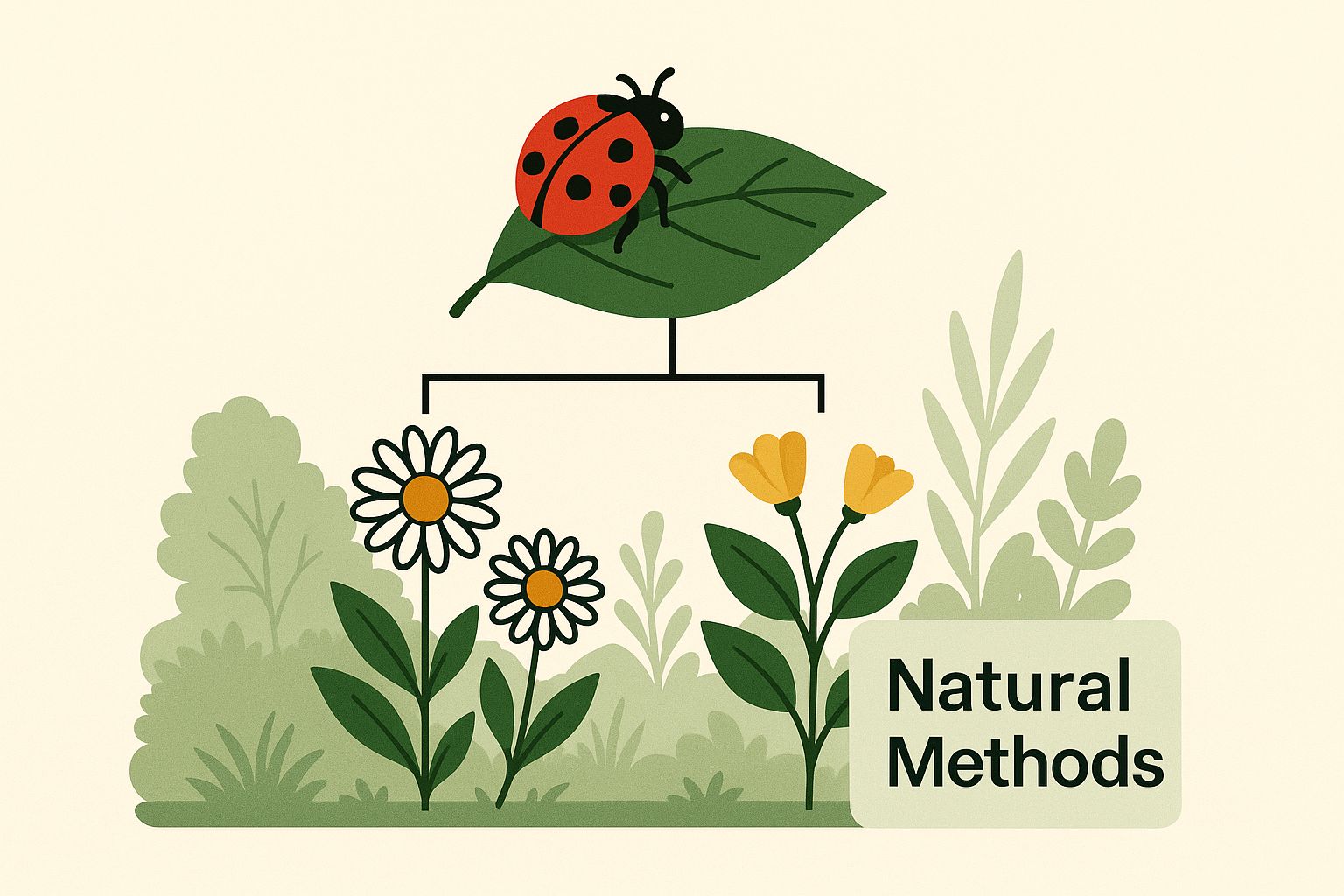
As you can see, strategies like using predators such as ladybirds to control aphids are a key part of smart, eco-friendly pest control.
Pillar 4: Evaluation
The final pillar is evaluation. After you’ve taken action, it’s essential to monitor the situation to see if it worked. Has the pest activity dropped off? Have they come back? This feedback loop is what makes IPM a truly sustainable and intelligent system.
This ongoing assessment allows you to adjust your strategy, learn what works for your specific environment, and constantly improve your preventative measures. It turns pest control from a one-off battle into a long-term management plan for a healthier, pest-free property.
Your Toolkit for Natural Pest Solutions
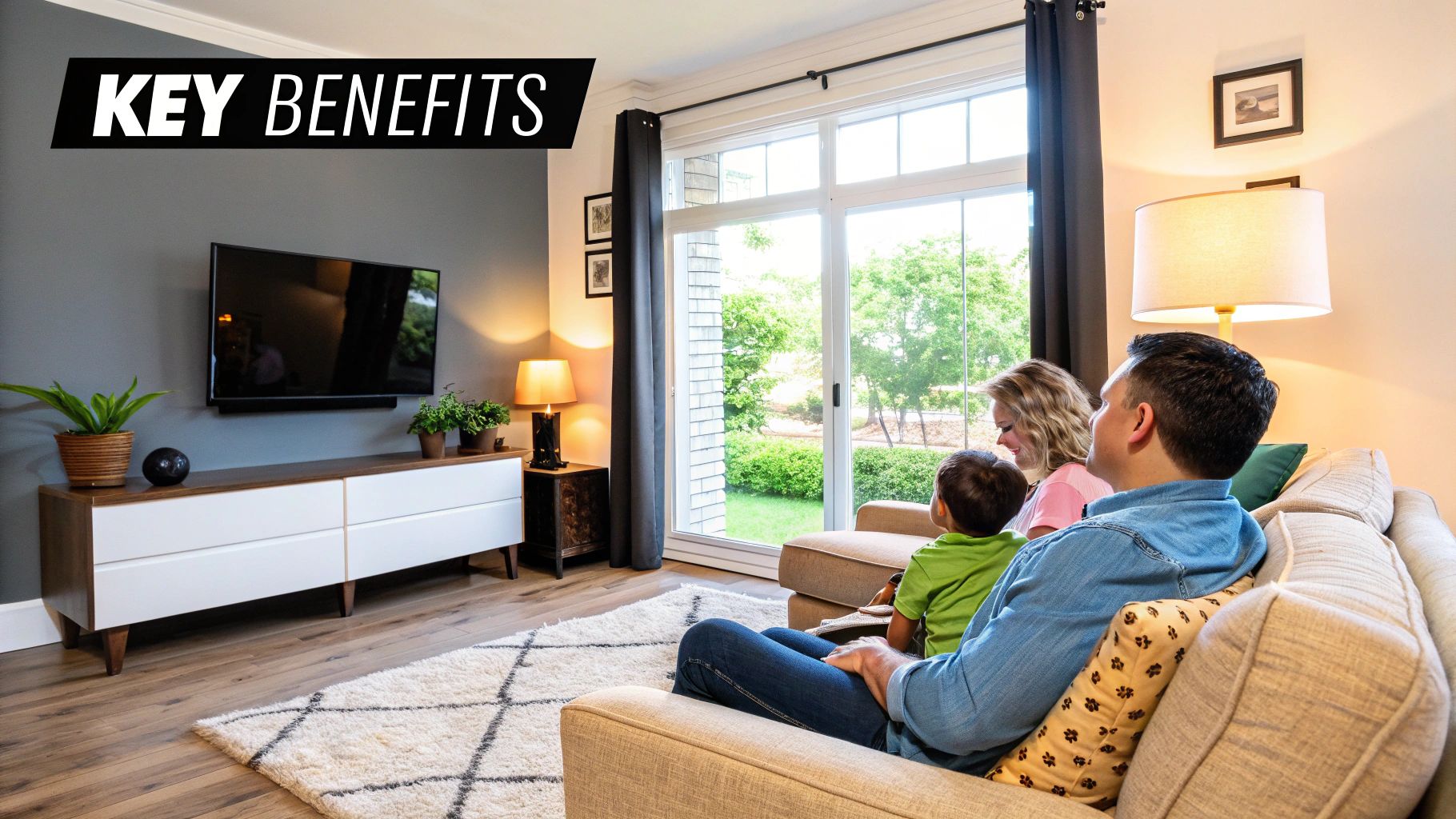
Ready for solutions that don't come with a hazard warning? Once you’ve got prevention and observation down, the next step is arming yourself with a range of effective, nature-based tools. An eco-friendly pest control toolkit works with your environment, not against it, using clever science and natural processes instead of harsh chemicals.
The goal here is to build a diverse arsenal. You wouldn't use a hammer for every DIY job, and you won’t use a single method for every pest. By layering different strategies, you create a resilient system that tackles problems from multiple angles.
Unleash Nature’s Allies
One of the most powerful strategies is biological control. It sounds complex, but the idea is beautifully simple: introduce or encourage natural predators to do the pest control work for you. Think of it as hiring tiny, specialised security guards for your garden.
This approach brings things back into balance by using the existing food chain. It’s a cornerstone of sustainable agriculture and a perfect example of working with nature, not fighting it.
- Beneficial Insects: Ladybirds are famous for their appetite for aphids, eating up to 5,000 in their lifetime. Lacewings and hoverflies are other excellent allies that help keep pest populations in check.
- Nematodes: These microscopic worms are fantastic for controlling soil-dwelling pests like slugs and vine weevils without harming plants, pets, or wildlife.
- Encouraging Predators: Planting specific flowers like yarrow or dill can attract these beneficial insects, turning your garden into a welcoming habitat for your pest-fighting partners.
By fostering a healthy ecosystem, you create a self-regulating environment where pests are less likely to get out of control in the first place. It’s a proactive, living solution.
This principle of supporting biodiversity is central to organic farming in the UK, which strictly avoids synthetic chemical pesticides. In fact, organic farmland accounted for about 3.1% of the UK's total agricultural land by 2025, and that figure keeps growing. You can read more about the trends in UK organic farming and its impact.
Harnessing Plant Power and Physical Barriers
Beyond living allies, your toolkit should include options derived directly from nature and simple physical deterrents. These methods offer targeted action with minimal environmental blowback.
Botanical Controls are pesticides derived from plants. While they are “natural,” they are still pesticides and should be used carefully and only as a last resort.
- Neem Oil: Extracted from the neem tree, this oil messes with the life cycle of many insects, including mites and aphids. It’s not an instant kill but works effectively over time.
- Pyrethrins: Derived from chrysanthemum flowers, these compounds are fast-acting nerve toxins for insects but break down quickly in sunlight, which reduces their environmental impact.
Physical and Mechanical Controls are some of the safest and most ingenious methods out there. They work by creating barriers or trapping pests without any chemicals at all.
- Diatomaceous Earth: This fine powder is made from fossilised algae. To us, it feels soft, but to insects with exoskeletons, its sharp edges are dehydrating and deadly. It’s excellent for crawling insects like ants and slugs.
- Pheromone Traps: These clever devices release synthetic pheromones that attract specific pests, like codling moths, trapping them before they can reproduce. They are highly targeted and won’t harm beneficial insects.
- Barriers: Simple mesh covers for your vegetable beds or copper tape around plant pots can physically block pests from ever reaching your plants.
While many of these methods are great for gardens, it’s crucial to remember that some beneficial insects, like bees, can sometimes become pests if they nest in structural voids. Understanding when to act is key, which is why our guide on bee pest control offers professional advice on responsible removal.
The Shift Towards Greener Pest Control
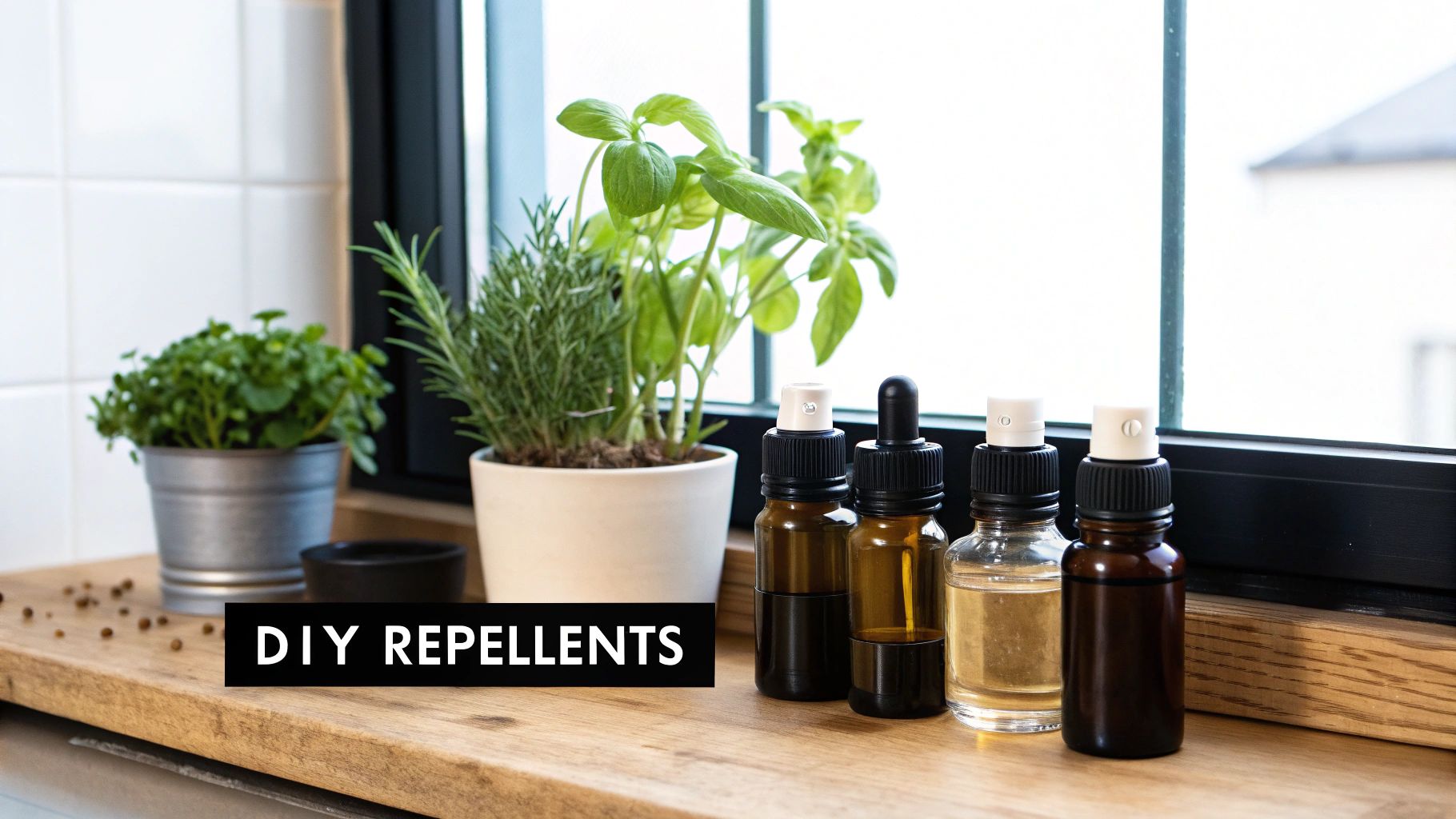
Eco-friendly pest control isn't just for organic gardeners anymore. It’s rapidly becoming the professional standard, driven by smarter technology, tougher regulations, and a public that’s rightly demanding safer, more sustainable solutions.
We’re moving on from the days of broad, indiscriminate chemical spraying. The future is about precise, data-led strategies that get better results with a much smaller environmental footprint. It's all about working smarter, not harder.
Modern eco-friendly pest control uses technology to make traditional Integrated Pest Management (IPM) more effective than ever. Professionals can now gather detailed information and act with surgical precision, solving pest problems at their source without resorting to widespread chemical use.
Technology Leading the Charge
The biggest game-changer has been the arrival of digital tools that give us real-time data. Imagine having a 24/7 watch over your property, alerting you to pest activity the moment it starts. That’s exactly what modern tech delivers.
Here's how it's making a difference:
- Remote-Monitoring Smart Traps: These devices send an instant notification when a pest is captured. This takes the guesswork out of the equation, cuts down on constant physical checks, and allows for immediate, targeted action right where it’s needed.
- Data-Driven Decisions: By tracking activity patterns, professionals can pinpoint entry points and hotspots with incredible accuracy. This intel strengthens the prevention and observation pillars of IPM, leading to proper long-term solutions.
This isn't just about new gadgets; it's a fundamental change in approach. By using better data, we can make smarter decisions that are safer for your family, pets, and the local ecosystem.
This shift is more than a trend; it's a powerful market force. The global pest control industry, valued at $20.1 billion in 2019, is projected to hit $44.3 billion by 2034. This explosive growth is largely fuelled by environmental regulations and the rising adoption of integrated strategies and biopesticides. You can read more about these pest control market trends and what's driving them.
A Future Defined by Sustainability
The industry's commitment to sustainability is clear. Stricter UK and EU regulations on chemical pesticides are pushing professionals to adopt greener alternatives. At the same time, the market for biopesticides—pest control agents derived from natural materials—is booming.
This ensures that when you choose an eco-friendly approach, you’re opting for a modern, effective, and forward-thinking solution.
This move towards responsible pest management isn’t just about protecting the environment; it’s about providing superior, lasting protection for your property. By combining scientific knowledge with advanced tools, we can now offer solutions that are not only effective but also aligned with a healthier future for everyone. Choosing greener methods gives you the confidence that you’re investing in the very best practices the industry has to offer.
Why Greener Pest Control Is Better for Everyone
Opting for eco-friendly pest control is about more than just clearing out unwelcome guests. Think of it as a proactive investment in the health of your home and everyone in it. The benefits ripple outwards, creating a safer environment for your family, your pets, and the local wildlife right outside your door.
This modern approach isn't about quick chemical fixes; it's about smart, sustainable, long-term solutions. By choosing methods that work with nature, not against it, you get the peace of mind that comes from knowing you aren't bringing unnecessary hazards into your living space.
A Healthier Home Environment
One of the biggest wins of going green is the drastic cut in chemical exposure. Traditional pesticides are often loaded with synthetic chemicals that can stick around on surfaces, in the air, and in your garden soil long after they've been sprayed.
This lingering residue can pose health risks, particularly for children and pets who spend most of their time close to the ground. Choosing eco-friendly pest control means you can sort out an infestation without worrying about the air you breathe or the surfaces you and your family touch every single day.
By minimising the use of harsh chemicals, you're not just dealing with a pest problem—you're actively creating a safer sanctuary for the people and animals you care about most. This preventative wellness is a core benefit of a greener strategy.
Protecting Your Local Ecosystem
The effects of pest control don't just stop at your garden fence. Conventional pesticides are often non-selective, which means they can harm beneficial insects just as easily as the pests you're trying to get rid of.
This is a massive problem for vital pollinators like bees and butterflies, whose numbers are already under threat. Greener methods are far more targeted, helping protect these essential creatures and preserve local biodiversity. On top of that, these sustainable practices prevent harmful chemical runoff from polluting nearby soil and water, protecting the delicate balance of the wider environment. It’s a responsible choice that contributes to a healthier community for all of us.
More Effective in the Long Run
It might sound counterintuitive, but eco-friendly strategies are often more effective over the long haul. Instead of just spraying the pests you can see, they get to the root of the problem—like sealing up entry points or getting rid of food sources that attract them in the first place.
This proactive approach is what stops pests from coming back, breaking the endless cycle of chemical treatments. It also helps prevent pests from developing resistance to chemicals, a growing issue with traditional pesticides. By focusing on lasting prevention, you build a more resilient home. If you're keen to tackle issues at their source, you can explore various professional pest control services that use these smarter, sustainable methods.
Right, knowing the theory is one thing, but turning that knowledge into a solid plan for your home and garden is where the real work begins. Let's walk through how to build a personalised, effective eco-friendly pest control strategy that moves you from simply knowing to actively doing.
Think of your property as your fortress. The very first job is to walk the perimeter and find the weak spots in your defences. Pests are opportunists; they’ll squeeze through the smallest invitation you give them. A structured inspection is your best line of defence.
Building Your Defensive Checklist
Start by methodically checking your property, inside and out. Your goal is to spot potential entry points and get rid of anything that might be attracting pests in the first place. A simple audit now can save you countless headaches down the line.
Your Inspection Hit List:
- Seal the Gaps: Look for tiny cracks in foundations, gaps around pipes, and tears in window screens. Remember, a mouse can get through a hole the size of a pencil, so you need to be thorough.
- Eliminate Water Sources: Check for leaky taps, dripping air conditioning units, and any patches of standing water. Pests need water to survive, so cutting off their supply makes your home far less inviting.
- Manage Your Bins: Make sure all your indoor and outdoor bins have tight-fitting lids. If you have a compost bin, keep it a good distance from the house and manage it properly to avoid attracting rodents and flies.
- Clear the Clutter: Piles of wood, garden debris, or general clutter right next to your house create the perfect hiding spots for pests like spiders and rodents. A tidy exterior is a much less welcoming one.
The most effective eco-friendly pest control isn’t a product you buy off the shelf; it’s a series of small, consistent actions that make your property an unwelcome environment for pests from the start.
Choosing the Right Tool for the Job
Once your defences are up, you can start tackling specific UK pests with targeted, low-impact solutions. The key is to match the method to the pest. This way, you avoid any collateral damage to your local ecosystem.
- For Slugs in the Garden: Forget the toxic pellets. Introducing nematodes to your soil is a brilliant biological control. These microscopic organisms actively hunt down and eliminate slugs without harming your plants, pets, or beneficial insects.
- For Mice in the Home: Before you even think about baits, focus on smart trap placement. Put humane or snap traps along the walls where you know mice travel, not out in the middle of a room. This simple change massively increases their effectiveness and ensures a swift, targeted removal.
- For Aphids on Your Roses: Why not encourage some natural predators? Planting flowers like marigolds or dill nearby can attract ladybirds, which are absolute machines when it comes to eating aphids. Suddenly, your garden starts to regulate itself.
Knowing When to Call for Backup
DIY methods are fantastic for minor issues, but some situations are best left to the professionals. A crucial part of any good pest management plan is knowing your limits.
It’s time to call a professional who specialises in eco-friendly pest control when:
- The infestation is widespread or seems to be growing fast.
- The pests pose a direct health risk (like cockroaches or rats).
- You can’t figure out what the pest is, or you can’t get to it (think termites or bed bugs).
- You’ve tried your best, but the problem just isn't going away.
A professional can bring in advanced, evidence-based solutions that are both effective and environmentally sound, making sure the problem is sorted right at the source.
For infestations that need expert attention, Pest Predators Limited provides scientifically-backed, eco-friendly solutions. Our qualified biologist integrates deep knowledge with practical skills to deliver lasting results. Secure your peace of mind and book a consultation today.
